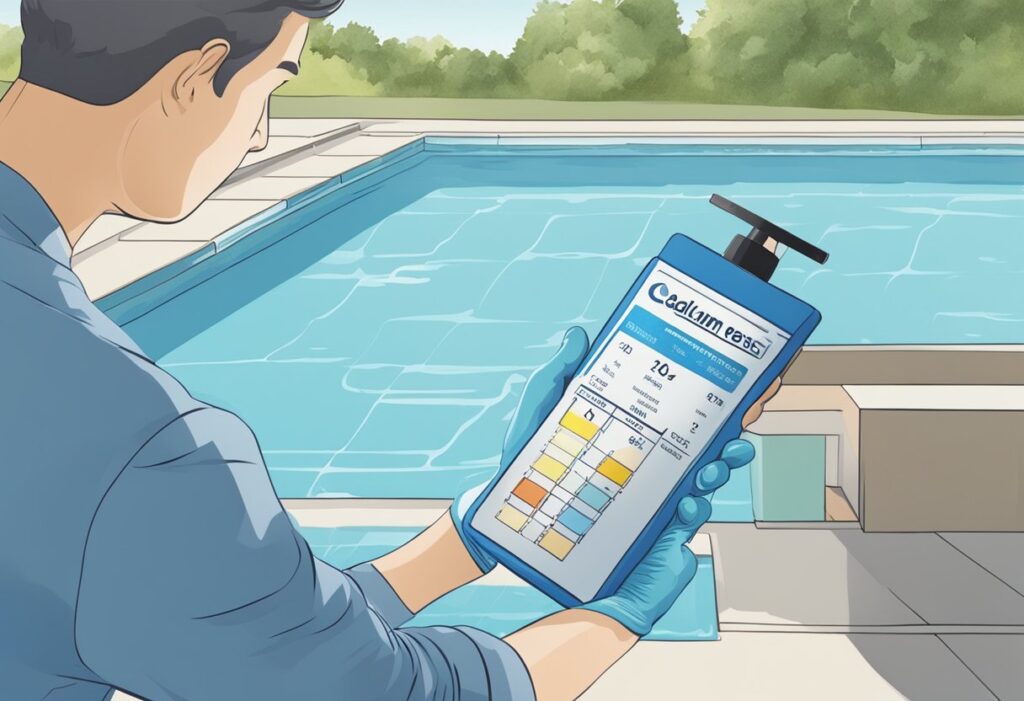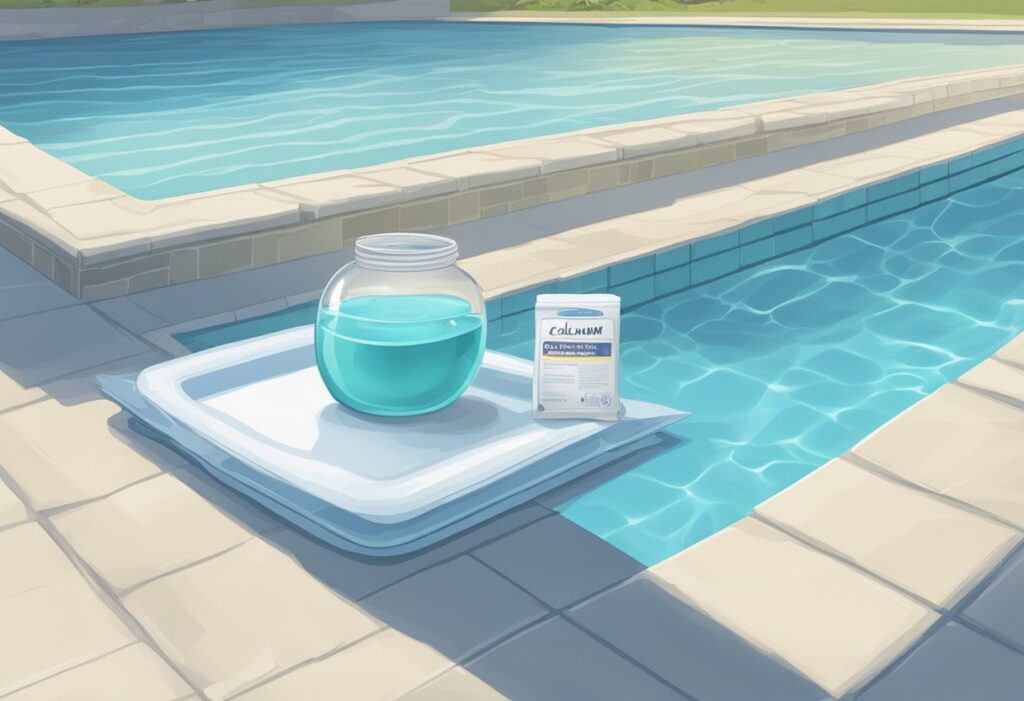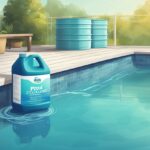Maintaining the appropriate level of calcium hardness in your swimming pool is crucial for the water’s overall balance and the protection of the pool surfaces. An optimal range of calcium hardness for a pool is typically between 200-400 parts per million (ppm). When these levels are too low, the water may become corrosive, leading to damage such as etching or pitting of pool surfaces. Conversely, if calcium levels are too high, you might observe scaling on the pool walls and equipment, and the water may appear cloudy.

Regular testing of your swimming pool’s water is essential for keeping calcium hardness within the desired range. This requires a reliable test kit that measures the ppm of calcium present in your pool water. It is important to test the water frequently—ideally, every week or at least every two weeks—to monitor and adjust the calcium hardness appropriately. This helps in preventing problems before they arise.
Should you find that the calcium hardness level is outside the ideal parameters, there are steps you can take to correct it. Low hardness may be adjusted by adding a calcium chloride supplement, while high levels can be managed by partially draining and diluting your pool water with softer water or by using specific products designed to lower calcium hardness. Being proactive with these measures will help ensure the longevity and clarity of your pool water, providing you with a safe and enjoyable swimming experience.
Understanding Calcium Hardness in Pool Water
Calcium hardness in your pool is essential for maintaining the balance of your water chemistry. Proper levels prevent problems such as scaling, corrosion, and cloudy water.
The Role of Calcium Hardness
Calcium hardness refers to the amount of dissolved calcium ions present in your pool water. It’s a crucial component of water balance, affecting the overall pool chemistry. Water with low calcium hardness can become aggressive, pulling calcium from pool surfaces, which leads to etching and damage. Conversely, water with high levels of calcium can lead to scaling on pool surfaces and equipment, as well as cloudy water.
Testing for Calcium Hardness
To ensure your pool’s calcium hardness stays within the ideal range, you need to test it regularly. Use a reliable calcium hardness test kit, which typically measures in parts per million (ppm). Testing should be done every two weeks, or more frequently if you have added new water or chemicals. Simple test strips or more elaborate test kits can give you a quick indication of your pool’s current calcium level.
Ideal Range for Calcium Hardness
The ideal range for calcium hardness in pool water varies depending on the type of pool:
- Plaster or concrete pools: 200-275 ppm
- Fiberglass or vinyl pools: 175-225 ppm
Keeping within this ideal range protects your pool’s surfaces and helps maintain the effectiveness of the other aspects of pool chemistry, such as total alkalinity and pH level. Regularly testing and adjusting as necessary will prevent most common water problems linked to calcium hardness.
Managing Low Calcium Hardness
When your pool’s calcium hardness levels are low, it’s critical to address the issue to prevent damage to the pool’s surfaces and maintain water clarity. You’ll need to understand the effects of this imbalance and how to safely increase the calcium hardness.
Effects of Low Calcium Hardness
If your pool water is too soft, meaning it has low calcium hardness, you risk damaging your pool’s plaster or concrete finishes because soft water can become corrosive. This means it may start to dissolve materials like concrete and metal fittings, leading to costly repairs. Additionally, low calcium levels can contribute to cloudy water, compromising the visual appeal and health of your swimming environment.
Increasing Calcium Hardness Safely
To raise the calcium hardness level in your pool, use a calcium hardness increaser, typically composed of calcium chloride. It’s important to follow these steps:
- Test the pool water to determine the current calcium hardness level. It should be between 200-275 ppm for plaster or concrete pools and 175-225 ppm for vinyl or fiberglass.
- Read the product label on the calcium hardness increaser for the correct dosage—use the formula (Desired increase in ppm) x (Pool volume in gallons) / (Increase per pound of product) to calculate the amount needed.
- With the pool filter running, add the required amount of calcium chloride to a bucket of warm water to dissolve.
- Pour the solution evenly around the pool’s perimeter for optimal distribution.
- Retest and rebalance water every 2-3 weeks to maintain appropriate calcium hardness levels.
By ensuring that calcium hardness is at an optimal level, you’ll minimise risks of corrosion and enable clearer, healthier pool water.
Dealing with High Calcium Hardness
When managing your swimming pool, high calcium hardness can lead to unwelcome effects like scaling and etching. Understanding how to reduce calcium hardness can help maintain your pool’s visual appeal and structural integrity.
Consequences of High Calcium Hardness
Elevated levels of calcium hardness in your pool water can disrupt the delicate balance required for a clean and stable pool environment. Specifically, high calcium hardness, typically above 275 parts per million (ppm) for concrete pools and 225 ppm for vinyl or fibreglass pools, can cause several issues:
- Scaling: Excess calcium can combine with carbonate ions to form calcium carbonate, which deposits on pool surfaces and equipment, potentially leading to blockages in your filtration system.
- Surface Damage: High calcium levels can lead to etching or pitting of pool surfaces, especially in plaster or concrete pools, which may necessitate costly repairs or resurfacing.
- Water Clarity: Excessive calcium can make your pool water cloudy and reduce the efficacy of chlorine and other sanitisers, leading to chemical imbalances and the need for additional maintenance.
Reducing Calcium Hardness Effectively
To lower calcium hardness effectively and prevent the negative effects associated with it, you can take the following actions:
Dilution:
- Partially drain the pool and refill it with fresh water if your local water source is low in calcium hardness.
- Monitor the hardness level to avoid replacing too much water, which can be wasteful and costly.
Pool Chemicals:
- Add a flocculant (pool floc) to help calcium particles clump together and settle to the bottom of the pool for easier removal.
- Muriatic acid may also be used to adjust the pH level, indirectly affecting calcium solubility.
-
Filtration:
- Enhance filtration by using a pool filter designed to remove particles that contribute to high calcium hardness from your water.
Action Purpose Partial Drain Dilutes calcium-rich water with fresh water. Flocculant Clumps calcium particles for easy vacuuming from the pool floor. Muriatic Acid Lowers pH and alkalinity, indirectly reducing calcium saturation. Filtration Filters out particles that contribute to high calcium hardness.
By taking these measured steps, you can help reduce the calcium hardness in your pool, limit the risk of scaling and surface damage, and maintain a healthy swimming environment. Remember to consistently test your pool’s calcium hardness levels and make adjustments as needed to prevent issues from recurring.
Maintaining Balanced Calcium Hardness

Effectively managing the calcium hardness in your pool water is crucial to maintaining both water quality and the integrity of your pool’s surfaces and equipment. A balanced level of calcium hardness prevents the water from becoming too soft or too hard, which can cause corrosion or scaling respectively.
Regular Pool Maintenance
Your pool requires regular testing to ensure the calcium hardness remains within the ideal range of 200-400 parts per million (ppm). Utilising a reliable testing kit weekly, or at least every fortnight, allows you to monitor and maintain an adequate water balance, including pH levels and alkalinity. Given that rainwater can be acidic, it’s important to test after heavy rainfall, as it can alter your pool’s chemistry. Consistent pool maintenance involving routine testing is your first line of defence in keeping calcium hardness levels in check.
Adjusting Chemical Levels
To balance calcium hardness, first understand that if levels are low, soft water can turn acidic, potentially damaging pool surfaces and equipment. To increase calcium hardness, add a calcium chloride product per the manufacturer’s instructions. Conversely, if your calcium hardness level is too high, which can lead to cloudy water and scaling, you can reduce it by partially draining the pool and adding fresh water.
If adjusting calcium hardness affects other aspects of pool chemistry, such as the pH level, you can use baking soda to increase alkalinity or soda ash for pH. Remember that chlorine levels are part of the whole pool chemistry spectrum and need to be maintained alongside calcium hardness for proper pool water balance. When treating your pool, always follow the dosing instructions carefully to avoid chemical imbalance, which can exacerbate existing issues or create new ones.











